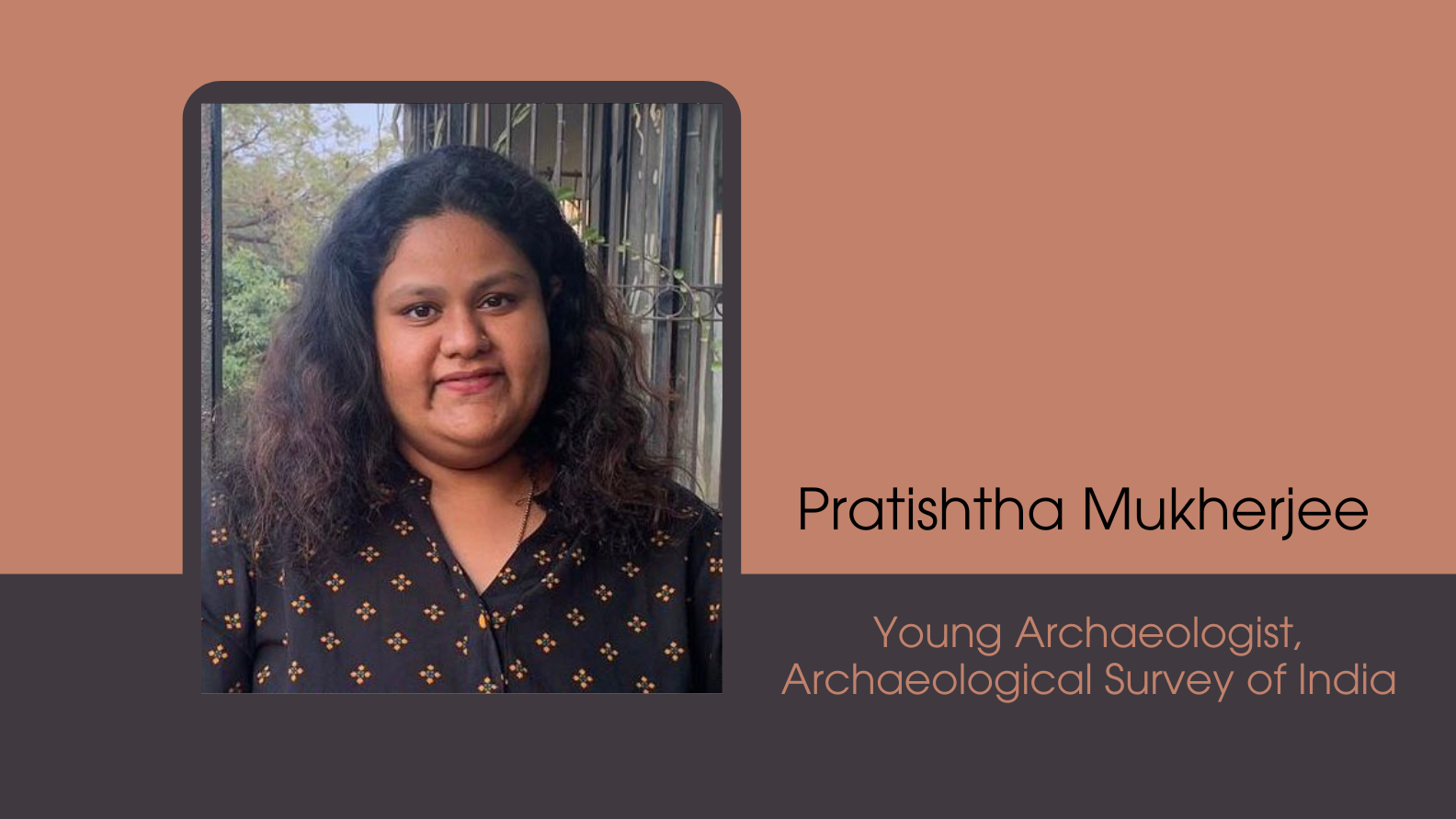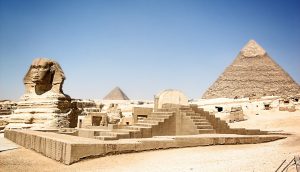Pratishtha Mukherjee is a distinguished scholar and researcher in the field of Archaeology and Ancient History, currently pursuing her PhD at The Maharaja Sayajirao University of Baroda. With a Master of Arts in Archaeology and Heritage Management from Guru Gobind Singh Indraprastha University, where she was honored as a Gold Medalist, and a Bachelor of Arts (Hons) from the same prestigious institution, Pratishtha’s academic journey reflects her unwavering commitment to the study of our rich cultural heritage. Her doctoral research focuses on the ‘Sculptural Analysis of the Yaksa Figurines from North India with special reference to Ganga Valley.’

The Social Digest: You have done masters in Archaeology and heritage management. Also, in one of your papers, there is a description of reconstruction of some sculptures found in Sanghol. What is the process of reconstruction and need to reconstruct the sculptures?
Reconstruction of the sculptures are simple process, and it is much simpler than the temple reconstruction which is a more elaborate, time consuming and tedious work. The process is simple which includes the collection of the fragmentary part and attaching them, to understand their iconography and features. The sculptures require reconstruction, not only to know the features but also the understanding and aesthetic understanding of the past societies. They act as an ideal for the drapery and fashion styles, environmental setup and the influence of the society.
The Social Digest: Would you like to brief about significant areas of ancient art and iconographical studies?
Definitely! Ancient art and iconographical studies encompass a diverse array of themes, each with unique characteristics and significance. Throughout history, art styles were often dominated and patronized by ruling dynasties, shaping the artistic expression of their times. For instance, Mauryan art flourished under the Mauryan emperors, with Emperor Asoka making a significant impact through the construction of stupas and the propagation of Buddhism. The Sunga dynasty followed, during which various sculptures and bas-reliefs (2D art) gained prominence. One notable example is the intricate railings of the Bharhut Stupa (in present-day Madhya Pradesh), the remains of which are exhibited at the Indian Museum, Kolkata.
Subsequently, the Kushan dynasty played a key role in the development of art, particularly through the Mathura and Gandhara schools. These schools produced distinctive art forms, blending local and Hellenistic influences. The Gupta period marked a golden age of Indian art, known for its sculptures depicting figures with softness and beauty, reflecting the cultural and artistic sophistication of the time.
The Social Digest: According to you, how does different sects affect the sculptural representation, and would you like to add some instances from your experience?
In ancient India, religion played an important role, and different parts of life were shaped by different sects and beliefs. For spreading religion and facilitating public communication, sculpture was an essential medium. Specifically, Buddhism and Jainism used art to communicate their concepts and ideologies. Sacred places like stupas—like the Sanchi Stupa, among others—became focal locations for creative expression. In the context of Buddhism, the depiction of Jataka tales—stories of the Buddha’s previous lives—was a common theme in sculptural art. The caves of Ajanta, for instance, are renowned for their paintings and carvings depicting these tales, which served to educate and inspire devotees. Similarly, Jainism utilized sculpture and art to convey its principles and stories, often depicting the lives of Jain Tirthankaras and other sacred themes.
The Social Digest: Would you like to brief about your experience of podcasts and what was it all about?
Indeed! I believe that Podcasts are an innovative new age method of talking of lesser-known facts, ideas, and thoughts. I started Podcasting with ABP Network and the themes were about heritage sites, scientific methods of exploration (as then ASI was exploring the area of Gyanvapi) and the most recent was about places to travel in India.
The Social Digest: What are your experiences with excavating a site?
I would say Excavating a site is a fascinating as well as a challenging experience. As it involves careful planning, meticulous execution, and a keen eye for detail. I have been involved in several excavation projects (sites of Gujarat and Haryana). Excavation involves various stages, starting from surveying and mapping the site to determine the best areas for excavation. Once the site is selected, the actual digging begins, usually in carefully planned trenches to expose the layers of soil and artifacts beneath the surface.
During excavation, it is crucial to record every find meticulously, including its location within the trench, the depth at which it was found, and any associated artifacts or features. This information helps in understanding the context of the find and its relationship to other artifacts and structures on the site. I would say excavating a site is a multidisciplinary endeavor that requires patience, attention to detail, and a deep understanding of the archaeological process.
The Social Digest: You have done several research and also conducted several courses based on heritage and culture. How does it help people with interest in art and architecture and what are the important aspects you focus on during such sessions?
Heritage and art are an important theme, and the recent awareness has attracted people from various fields. The Research and courses on heritage and culture benefit individuals interested in art and architecture as it provides insights into historical contexts, aesthetic appreciation, preservation techniques, cultural diversity, and interdisciplinary learning. These sessions help participants develop a deeper understanding and appreciation for art and architecture, enriching their knowledge and fostering a greater appreciation for cultural heritage.
The Social Digest: You also have completed a Sanskrit speaking course conducted by IIT Roorkee, what were your experiences with it and what was the reason behind pursuing a course on ancient language?
The Sanskrit speaking course conducted by IIT Roorkee was a wonderful experience. It provided me with a foundational understanding of Sanskrit grammar, vocabulary, and pronunciation. I pursued this course primarily to enhance my research in archaeology and ancient history. Sanskrit is an important language for studying ancient Indian texts, including religious scriptures, philosophical treatises, and historical accounts, I aimed to better understand and interpret these texts, which are valuable sources of information for my PhD research on Yaksa figurines and North Indian archaeology.
The Social Digest: If you can give us an insight about any current project you are working on?
Presently I am in the final stage of my PhD research work, that focuses on the iconography and cultural significance of Yaksha figurines in the Ganga Valley region of North India. This project involves a detailed study of Yaksa sculptures from various archaeological sites, with a particular emphasis on their stylistic evolution, symbolic meanings, and cultural contexts.
This interview was conducted by The Social Digest on 28/03/2024. If you have any interview recommendations or have a story that you want to share with our readers, write us at editor@thesocialdigest.com



